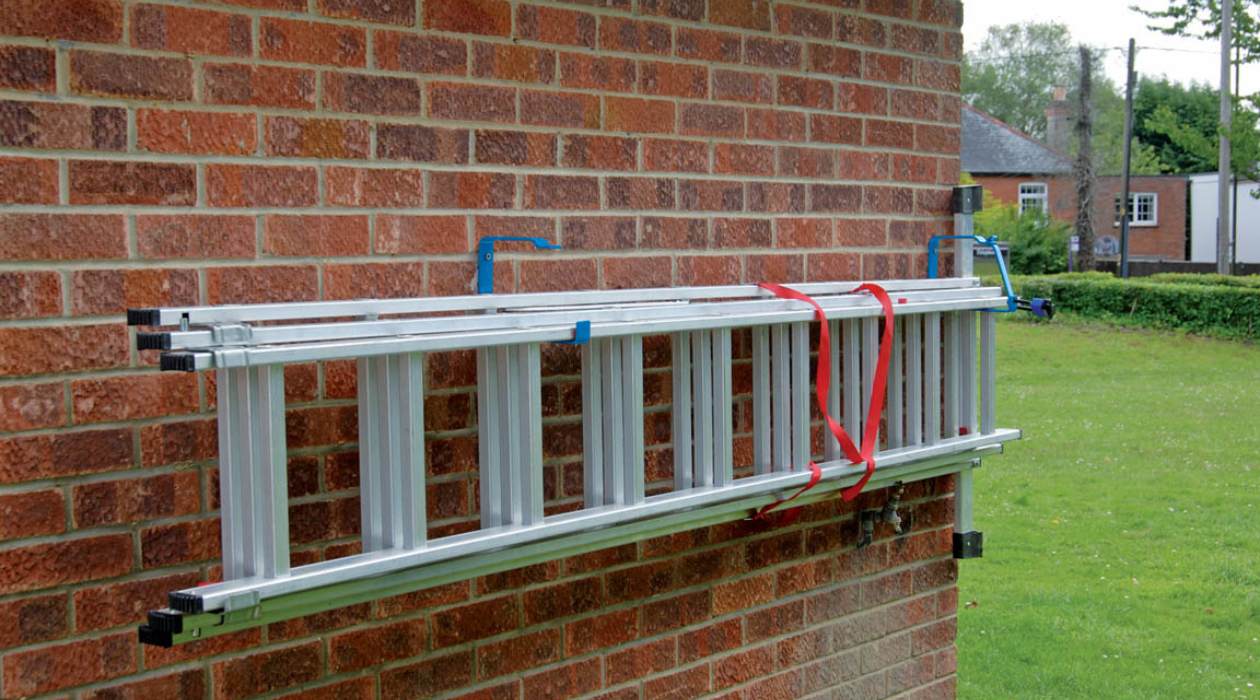

Articles
How To Store Ladders Outside
Modified: May 6, 2024
Learn effective ways to store ladders outside with our informative articles, ensuring durability and convenience for easy access.
(Many of the links in this article redirect to a specific reviewed product. Your purchase of these products through affiliate links helps to generate commission for Storables.com, at no extra cost. Learn more)
Introduction
When it comes to storing ladders, finding the right space can often be a challenge. Many homeowners and professionals struggle with limited storage options indoors, leading them to explore storing ladders outside. While this may seem like a viable solution, it is essential to consider several factors to ensure the safety and longevity of your ladders.
In this article, we will delve into the benefits of storing ladders outdoors, discuss factors to consider before opting for outdoor storage, and provide useful tips for proper ladder storage. Whether you have a small backyard shed or a large garage, this guide will help you make informed decisions and maximize the lifespan of your ladders.
Key Takeaways:
- Storing ladders outside offers space-saving, easy access, and increased lifespan. Consider weather, security, and proper maintenance to ensure safe and efficient outdoor storage.
- Choosing the right location, using protective measures, and regular maintenance are crucial for effective outdoor ladder storage. Maximize lifespan and usability with proper care and attention.
Read more: How To Store Extension Ladder Outside
Benefits of Storing Ladders Outdoors
Storing ladders outside offers several advantages that make it a practical choice for many individuals. Here are some key benefits:
- Space Saving: Storing ladders outside frees up valuable space in your garage or storage area, allowing you to utilize the area for other items or activities.
- Easier Access: By keeping ladders outdoors, you can have quick and convenient access whenever they are needed. This is especially beneficial for professionals who frequently use ladders for their work.
- Reduced Risk of Damage: Storing ladders outside can minimize the risk of damage to your property. Ladders can be bulky and heavy, and keeping them outdoors prevents potential accidents that can occur when maneuvering them in tight indoor spaces.
- Increased Ladder Lifespan: When stored properly outdoors, ladders can have a longer lifespan. Adequate air circulation can help prevent the accumulation of moisture, reducing the chances of rust or other damage that can occur in damp indoor environments.
- Cost-Effective: Storing ladders outdoors eliminates the need for expensive storage solutions like racks or cabinets, saving you money in the long run. You can utilize existing outdoor spaces such as walls, fences, or even customized storage brackets.
- Aesthetically Pleasing: When stored in an organized and visually appealing manner, ladders can add a unique decorative element to your outdoor space. With creativity and imagination, you can turn them into eye-catching features that enhance the overall look of your property.
While there are many benefits to storing ladders outside, it’s important to consider certain factors before making this decision. Let’s explore these factors in detail in the next section.
Factors to Consider Before Storing Ladders Outside
Before opting to store your ladders outside, there are several important factors to consider:
- Weather Conditions: Evaluate the weather conditions in your area. Extreme temperatures, heavy rain, or excessive sun exposure can have a significant impact on the durability and longevity of your ladders. Consider using ladder covers or tarps to protect them from the elements.
- Security: Assess the security of your outdoor storage area. Ensure that it is safe from theft or unauthorized access by adding locks, chains, or even a security camera system. This will help prevent your ladders from being stolen or damaged.
- Space Restrictions: Assess the available space and ensure it is sufficient for accommodating your ladders. Measure the length and width of your ladders to determine if the chosen area can accommodate them safely and without obstructing other areas or pathways.
- Ground Surface: Examine the surface where you plan to store your ladders. Ensure that it is stable, level, and free from obstacles or hazards that could potentially cause the ladders to become unstable or pose a safety risk.
- Wind Exposure: Consider the wind exposure in your area. Strong winds can pose a risk of ladders toppling over. If your outdoor storage area is prone to high winds, consider securing the ladders with straps or brackets to prevent them from being blown away.
- Aesthetic Considerations: Evaluate how storing ladders outside will impact the overall appearance of your property. Ensure that the chosen storage location is visually appealing and doesn’t detract from the aesthetics of your home or outdoor space.
By carefully considering these factors, you can make an informed decision about whether storing your ladders outside is a suitable option for your specific circumstances. In the next section, we will explore how to choose the right location for outdoor ladder storage.
Choosing the Right Location for Outdoor Ladder Storage
When it comes to storing ladders outside, selecting the right location is crucial for ensuring their safety and durability. Here are some important factors to consider when choosing a storage location:
- Accessibility: Choose a location that allows for easy access to your ladders. It should be convenient to reach whenever you need to use them. Consider proximity to the areas where you frequently use ladders, such as the house, garage, or work area.
- Sheltered Area: Look for a sheltered area that provides some protection against the elements. Ideally, choose a location under a roof overhang, against a wall, or near a fence to provide some coverage and reduce exposure to direct sunlight, rain, or snow.
- Stable Surface: Ensure that the chosen location has a stable surface. Avoid uneven or sloping surfaces, as they can make the ladders unstable or prone to tipping over. A flat, level surface, such as a concrete pad or solid ground, is ideal for outdoor ladder storage.
- Non-Obstructive Area: Select a storage location that doesn’t obstruct pathways or impede access to other areas of your outdoor space. This will prevent accidents and make it easier to retrieve the ladders without any obstructions or obstacles in the way.
- Visibility: Keep visibility in mind when choosing the storage location. Ensure that the ladders are easily visible, both for your convenience and as a deterrent against theft. Avoid hidden or secluded areas that may make it easier for potential thieves to access or steal your ladders.
- Compatibility with Ladder Covers: If you plan to use ladder covers or tarps to protect your ladders, ensure that the chosen location allows for easy installation and removal of the covers. Consider the space needed to adequately cover the ladders without causing any damage or inconvenience.
By taking these factors into account, you can find the perfect location for storing your ladders outdoors. In the next section, we will discuss how to protect your ladders from weather elements using ladder covers or tarps.
Using Ladder Covers or Tarps to Protect against Weather Elements
When storing ladders outdoors, protection against weather elements is crucial to maintaining their condition and prolonging their lifespan. One effective way to safeguard your ladders is by using ladder covers or tarps. Here are some tips on how to use them effectively:
- Choose the Right Material: Opt for ladder covers or tarps made from durable, weather-resistant materials such as heavy-duty polyethylene or waterproof polyester. These materials provide excellent protection against rain, snow, UV rays, and other weather conditions.
- Cover the Entire Ladder: Ensure that the ladder cover or tarp completely covers the entire length of the ladder, including the rungs and the base. This will shield the ladder from direct exposure to the elements, preventing rust, corrosion, or any other damage that can occur due to moisture or sunlight.
- Secure the Cover: Use secure fastening methods such as bungee cords or straps to keep the ladder cover or tarp in place. This will prevent it from being blown away by strong winds or dislodged during storms. Ensure that the cover is tightly secured but not so tight that it causes unnecessary strain on the ladder.
- Check for Proper Ventilation: While it’s important to protect the ladder from the elements, ensure that there is adequate ventilation to prevent the buildup of condensation. If moisture gets trapped inside the cover, it can lead to mold or mildew growth, which can damage the ladder. If possible, choose covers that have built-in ventilation features.
- Regular Maintenance: Periodically inspect the ladder covers or tarps for any signs of damage or wear. Repair or replace them as needed to ensure continued protection. Additionally, check the ladders themselves for any signs of moisture or damage, and address any issues promptly to avoid further deterioration.
- Proper Storage of Covers: When not in use, store the ladder covers or tarps in a clean, dry area to prevent them from becoming damaged. Fold them properly or roll them up neatly to minimize creases and ensure they remain in good condition for future use.
By using ladder covers or tarps effectively, you can provide an additional layer of protection to your outdoor storage ladders, keeping them in optimal condition for years to come. In the next section, we will explore how to secure ladders with locks or chains to prevent theft or unauthorized access.
To store ladders outside, use a ladder rack or hooks to keep them off the ground and protected from the elements. Make sure they are securely fastened to prevent them from falling or being blown over. Regularly check for any signs of damage or wear.
Read more: How To Store A Ladder
Securing Ladders with Locks or Chains
Ensuring the security of your stored ladders is essential to prevent theft and unauthorized access. One effective method of securing your ladders is by using locks or chains. Here are some tips on how to secure ladders with locks or chains:
- Choose High-Quality Locks: Invest in high-quality locks that are specifically designed for securing ladders. Look for locks that are made from durable materials, such as hardened steel, and have features such as anti-pick mechanisms or tamper-resistant designs.
- Select Heavy-Duty Chains: Use heavy-duty chains that are difficult to cut or break. Look for chains that are made from hardened steel or have a high tensile strength. Consider the thickness and length of the chain to ensure that it can securely bind your ladders.
- Secure Ladders to Robust Fixtures: Attach one end of the chain or lock to a robust fixture, such as a sturdy wall bracket, fence post, or other fixed structure. Ensure that the fixture is securely anchored and capable of withstanding attempts to remove or tamper with the chain.
- Wrap the Chain Around Ladder Rungs: Pass the chain or lock through the ladder rungs, securing multiple rungs if possible. This prevents the ladder from being easily slid out or removed. Make sure the chain is tightly secured to eliminate any slack that could be exploited by potential thieves.
- Position Locks or Chains Out of Reach: Place the locks or chains in a position where they are not easily accessible or visible. This makes it more challenging for potential thieves to attempt to cut or remove them. Position them in a way that doesn’t interfere with the ladder’s stability or create a safety hazard.
- Regularly Inspect Security Measures: Periodically inspect the locks, chains, and their attachments to ensure that they remain secure and in good condition. Check for any signs of damage or tampering and promptly address any issues. Regular maintenance helps maintain the effectiveness of your security measures.
By securing your ladders with locks or chains, you can significantly reduce the risk of theft and unauthorized access. These measures provide peace of mind, knowing that your valuable ladders are protected. In the following section, we will provide some tips for properly storing ladders outdoors to ensure their longevity.
Tips for Properly Storing Ladders Outdoors
Proper storage techniques are essential for maintaining the condition and longevity of your ladders when stored outdoors. Here are some valuable tips to ensure your ladders are stored effectively:
- Clean and Inspect: Before storing your ladders, clean them thoroughly to remove any dirt, debris, or other substances that may have accumulated. Inspect the ladders for any signs of damage, such as cracks or bent rungs, and address any issues before storage.
- Proper Placement: Position the ladders in a stable manner to prevent them from falling or causing any hazards. Lean them against a wall or fence, or use specialized ladder storage brackets to hold them securely in place, ensuring they are not at risk of sliding or tipping over.
- Avoid Direct Contact with the Ground: Elevate the ladders slightly to prevent direct contact with the ground. This avoids moisture buildup or potential damage from insects or other pests. Use a pallet, wooden blocks, or other suitable objects to lift the ladders off the ground.
- Organize and Label: Keep your outdoor storage area neatly organized by arranging the ladders in a systematic manner. Label them for easier identification and access, especially if you have multiple ladders of different types or lengths.
- Protect Against Rust: Apply a rust-resistant coating or spray to metal parts of the ladder to protect against corrosion caused by the outdoor environment. This extra layer of protection can significantly extend the lifespan of your ladders.
- Consider Ladder Accessories: Utilize ladder accessories such as hooks, brackets, or hangers to maximize storage space and keep your ladders securely in place. These accessories can help prevent damage and provide additional stability.
- Frequent Usage: If you use your ladders frequently, consider storing them in a more easily accessible location. This allows for quick retrieval and reduces the risk of accidents or damage that can occur when maneuvering ladders in tight spaces.
- Regular Maintenance: Perform regular maintenance on your ladders, even when stored outdoors. Inspect them periodically to ensure they remain in good condition, and address any issues immediately. Lubricate moving parts, tighten loose screws, and replace any worn-out components.
By following these tips, you can ensure that your ladders are stored properly and remain in excellent condition for years to come. Remember to regularly inspect and maintain your stored ladders to address any potential issues promptly. In the next section, we will highlight the importance of regular maintenance and inspection of outdoor ladder storage.
Regular Maintenance and Inspection of Outdoor Ladder Storage
Maintaining and inspecting your outdoor ladder storage is crucial for ensuring the safety and longevity of your ladders. Here are some important practices to follow:
- Clean Ladders Regularly: Regularly clean your ladders to remove any dirt, dust, or debris that may have accumulated. Use a soft brush or cloth, and if necessary, mild detergent or cleaning solution. Clean both the rungs and the surface of the ladder to keep them in good condition.
- Inspect for Damage: Periodically inspect your ladders for any signs of damage or wear. Check for cracks, bent rungs, loose connections, or any other issues that may compromise the ladder’s structural integrity. Address any problems immediately to prevent further damage or safety risks.
- Tighten Loose Fasteners: Check all the fasteners, such as bolts, screws, and rivets, to ensure they are secure. Over time, vibrations and environmental factors can cause these fasteners to loosen. Tighten them as needed to maintain the stability of the ladder.
- Lubricate Moving Parts: Apply lubricant to any moving parts of your ladders, such as hinges or pulleys. This helps reduce friction and ensures smooth operation. Use a silicone-based lubricant or a lubricant specifically designed for ladder maintenance.
- Check Safety Labels and Labels: Review the safety labels and warning labels on your ladders to ensure they are legible and intact. These labels provide important instructions and information for safe use. If any labels are damaged or missing, contact the manufacturer for replacement labels.
- Monitor Storage Conditions: Regularly assess the storage conditions of your outdoor ladder storage area. Look for signs of moisture buildup, pest infestation, or any other environmental factors that could impact the integrity of the ladders. Take necessary steps to mitigate any potential risks.
- Repair or Replace Damaged Parts: If you discover any damaged or worn-out parts during your inspections, promptly repair or replace them. Follow the manufacturer’s guidelines or consult a professional if you are unsure about the proper procedures for repairs or replacements.
- Keep Records of Maintenance: Maintain a record of all maintenance activities performed on your ladders. This helps keep track of when inspections were conducted, what repairs were made, and any other relevant details. These records can be useful for future reference and in case of warranty claims.
Regular maintenance and inspection ensure that your outdoor ladder storage remains in optimal condition and reduces the risk of accidents or failures when using the ladders. By following these practices, you can extend the lifespan of your ladders and ensure their continued safety. In the concluding section, we will summarize the key points discussed in this article.
Conclusion
Storing ladders outside can be a practical solution for homeowners and professionals who are limited on indoor storage space. By considering the benefits, factors to consider, the right location, protective measures, and regular maintenance, you can efficiently store your ladders outdoors while ensuring their safety and longevity.
The benefits of storing ladders outside include space-saving, easy access, reduced risk of damage, increased ladder lifespan, cost-effectiveness, and the opportunity to add aesthetic appeal to your outdoor space. However, it’s important to consider factors such as weather conditions, security, space restrictions, ground surface, wind exposure, and aesthetic considerations before deciding on outdoor storage.
Choosing the right location for outdoor ladder storage involves considerations such as accessibility, sheltered areas, stable surfaces, non-obstructive placement, visibility, and compatibility with ladder covers. Properly using ladder covers or tarps can protect the ladders from weather elements, while securing them with locks or chains enhances security and helps prevent theft or unauthorized access.
Proper ladder storage techniques include cleaning and inspecting ladders regularly, avoiding direct contact with the ground, organizing and labeling, protecting against rust, utilizing ladder accessories, and considering frequent usage. Regular maintenance and inspection play a vital role in ensuring the safety and durability of your stored ladders.
By implementing these tips, you can store your ladders outdoors in a safe and efficient manner, maximizing their lifespan and usability. Remember to regularly clean, inspect, and maintain your ladders, addressing any issues promptly. With proper care and attention, your outdoor ladder storage can serve you well for years to come.
Now that you've got the scoop on keeping ladders safe and sound outdoors, why stop there? For those who love a tidy and functional outdoor space, dive into our next read on inventive potting bench solutions. Perfect for garden enthusiasts and organizational pros alike, this article offers smart ways to streamline your gardening efforts and keep all tools in check. Don't miss out on transforming your outdoor areas into well-organized havens.
Frequently Asked Questions about How To Store Ladders Outside
Was this page helpful?
At Storables.com, we guarantee accurate and reliable information. Our content, validated by Expert Board Contributors, is crafted following stringent Editorial Policies. We're committed to providing you with well-researched, expert-backed insights for all your informational needs.
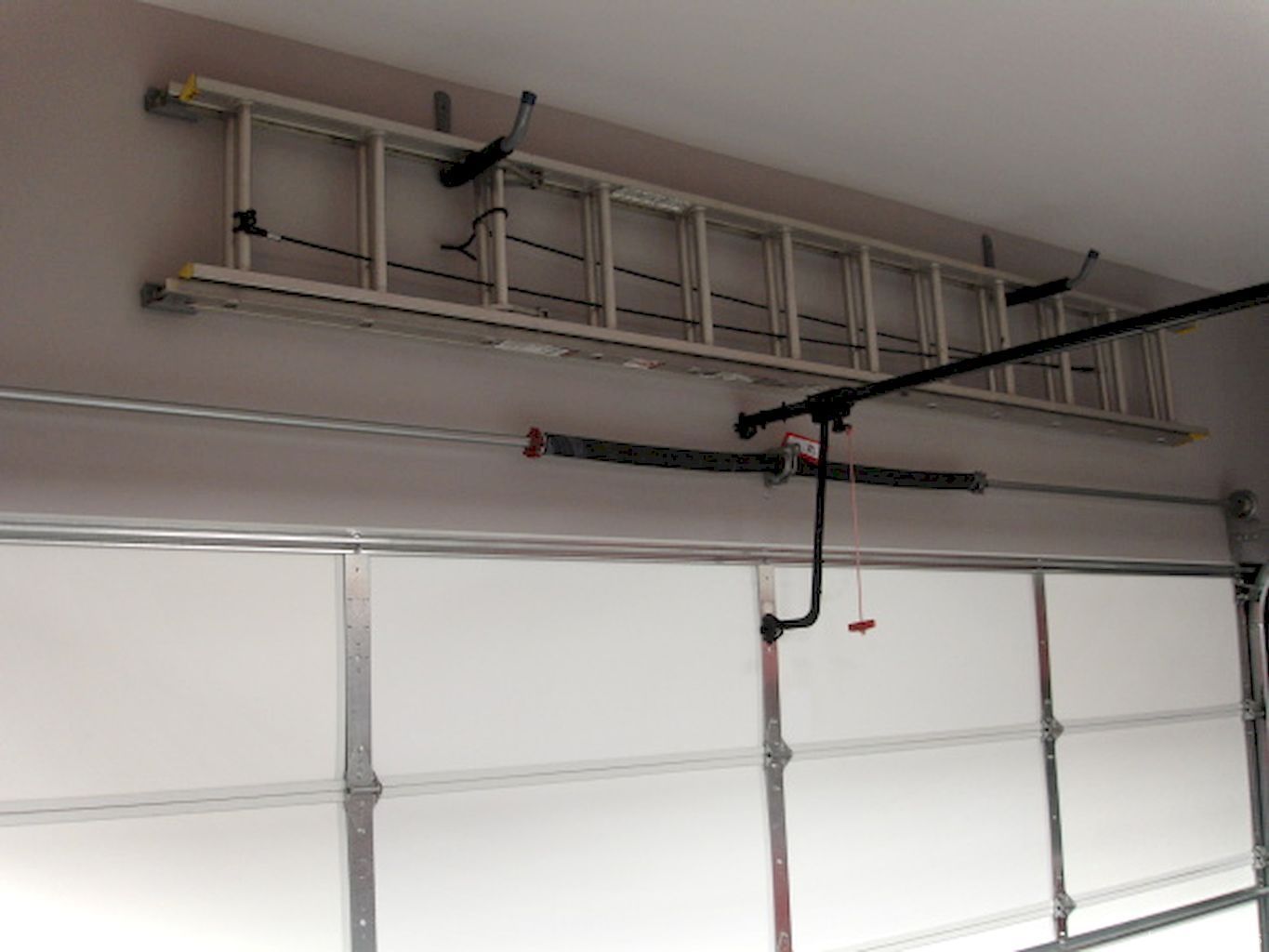

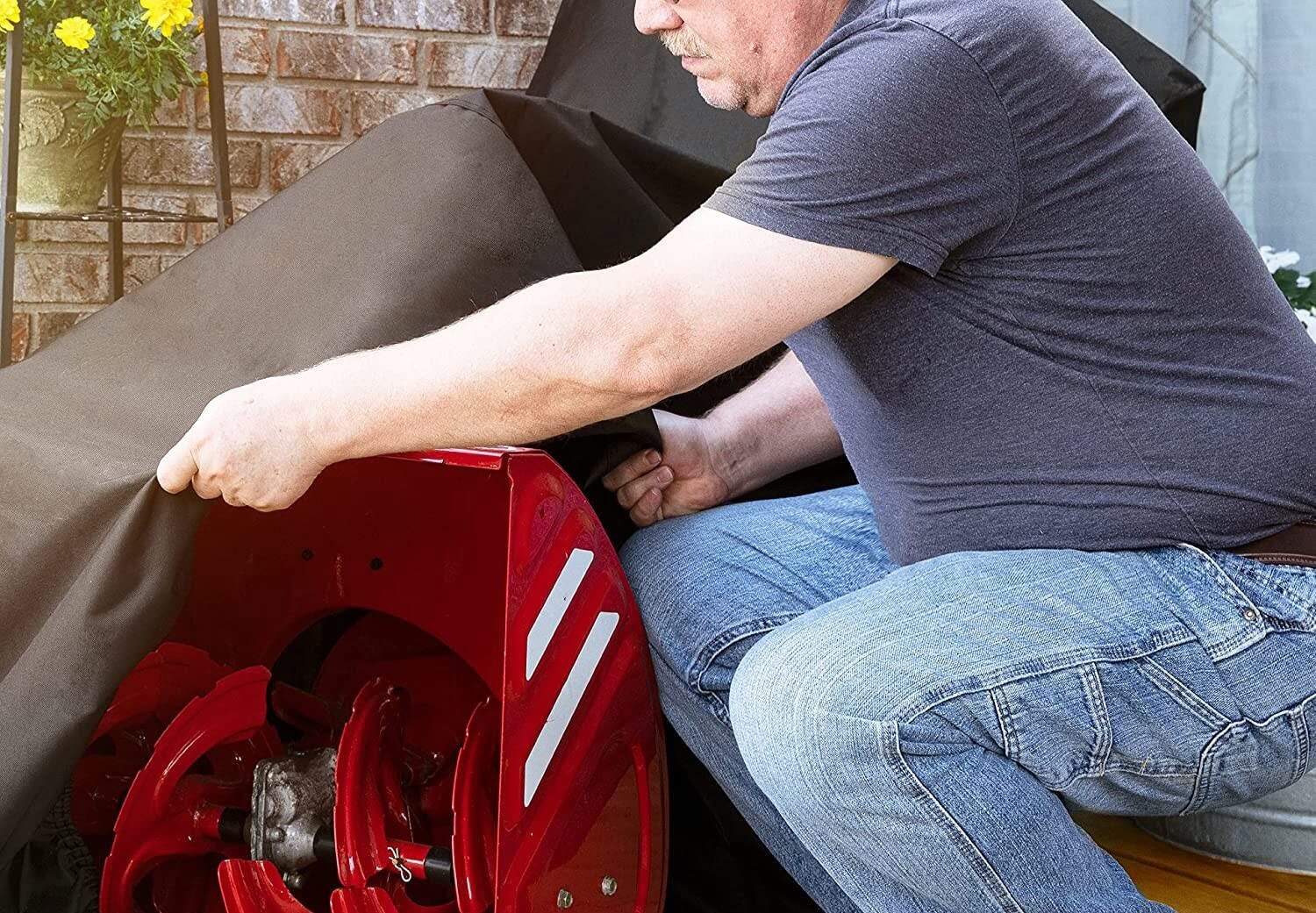
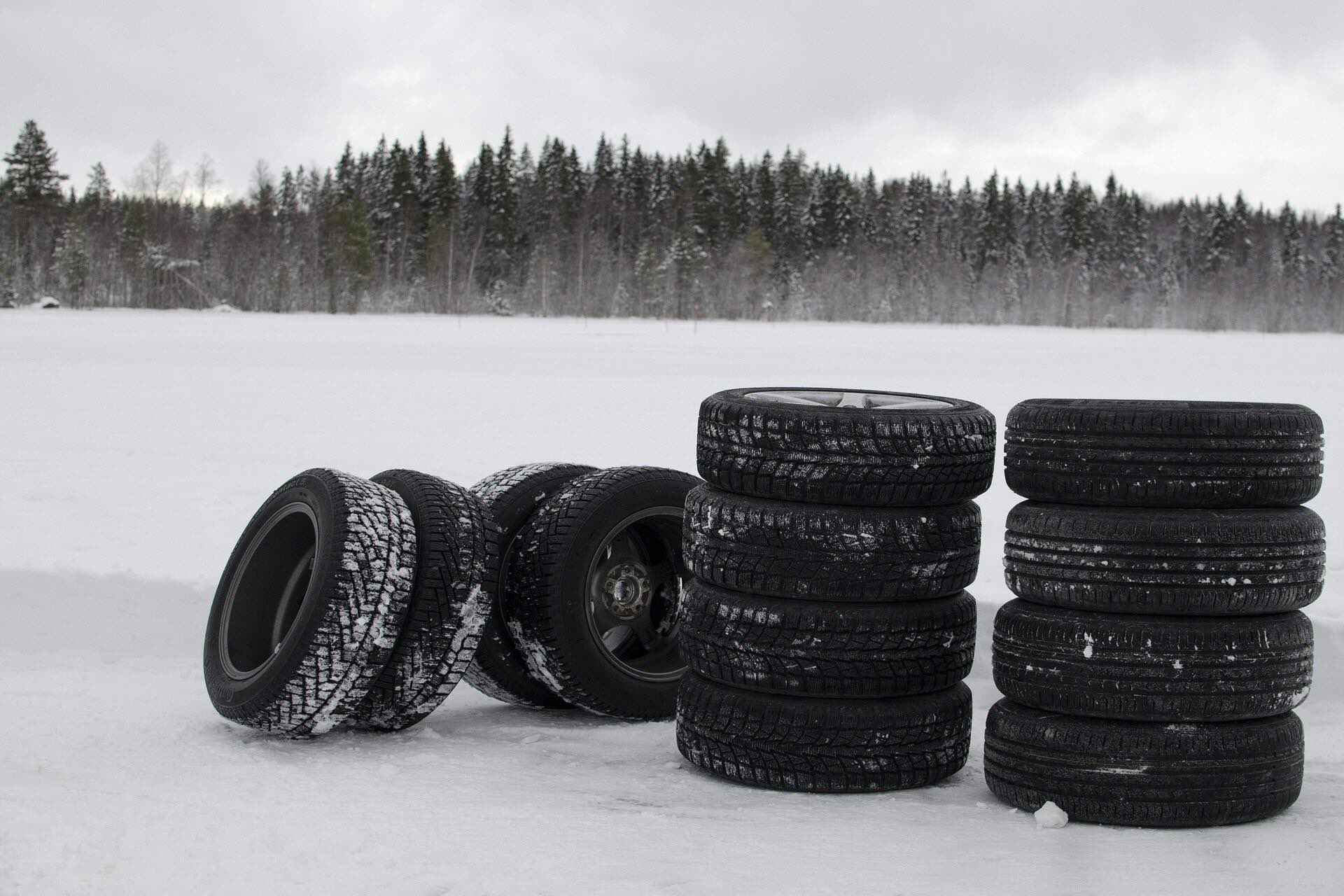
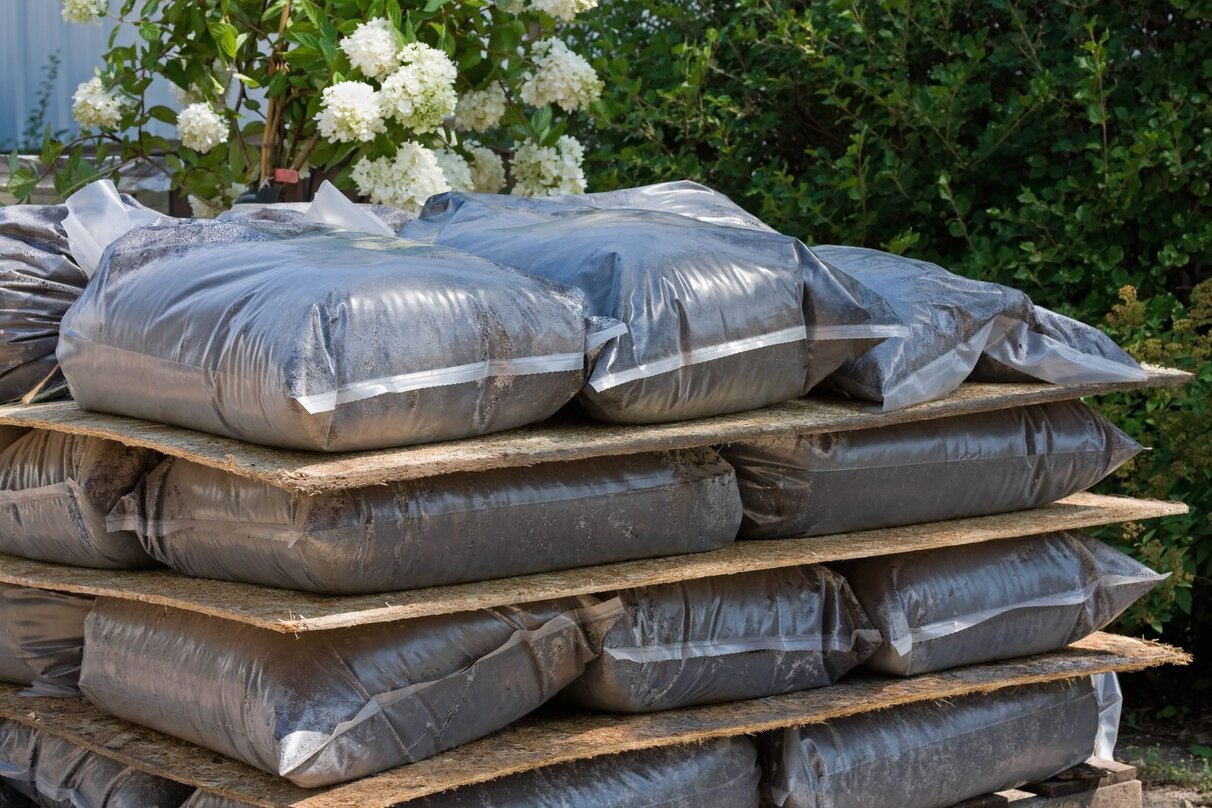


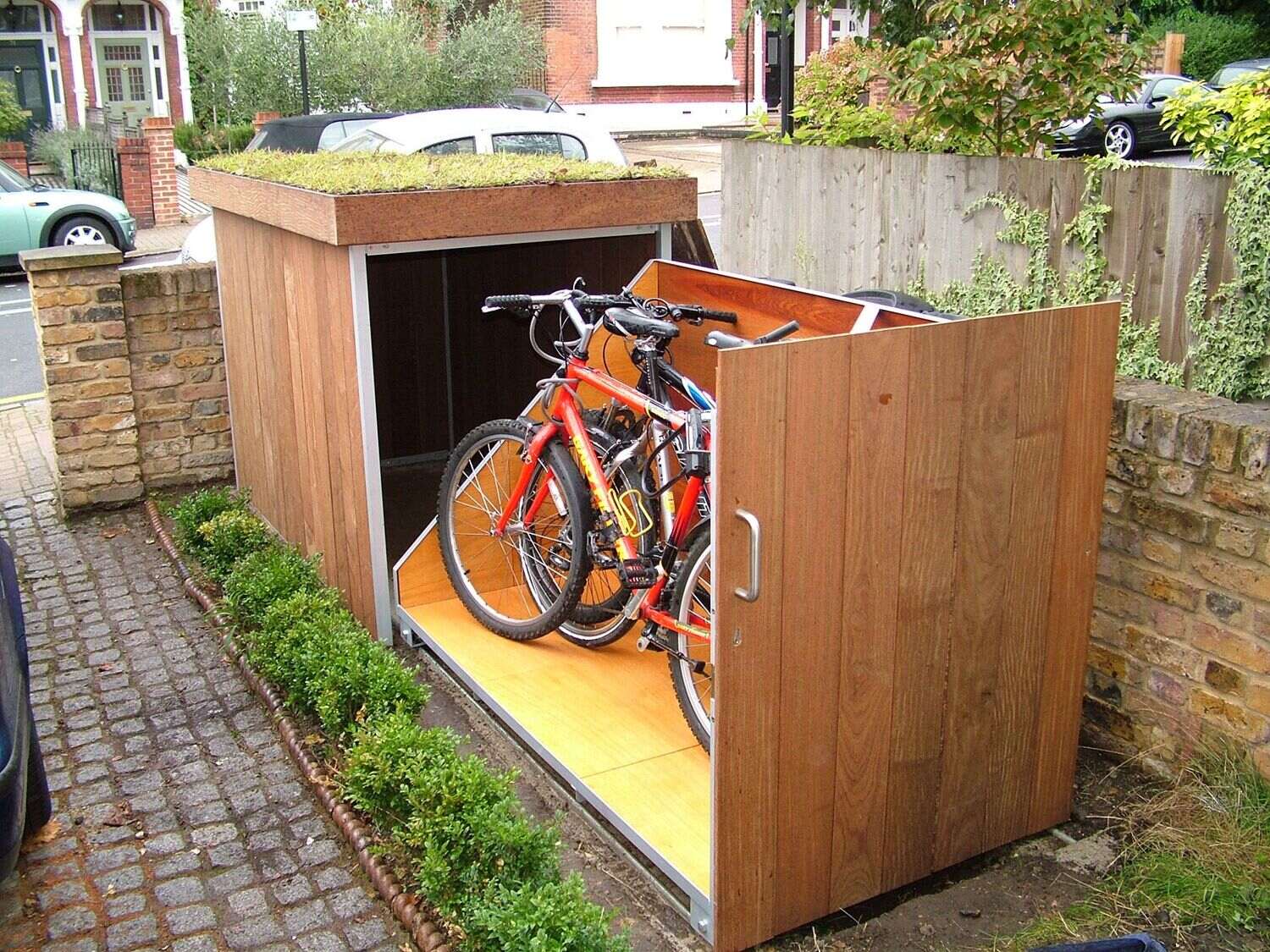

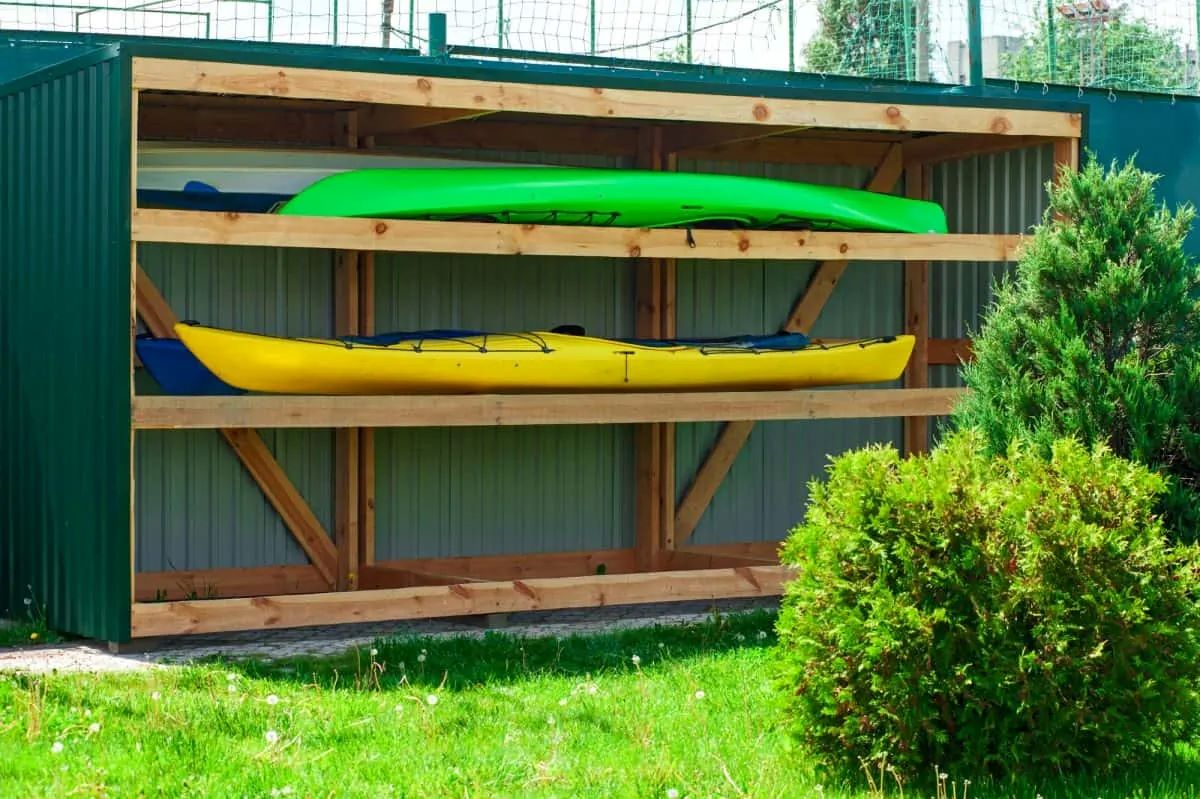

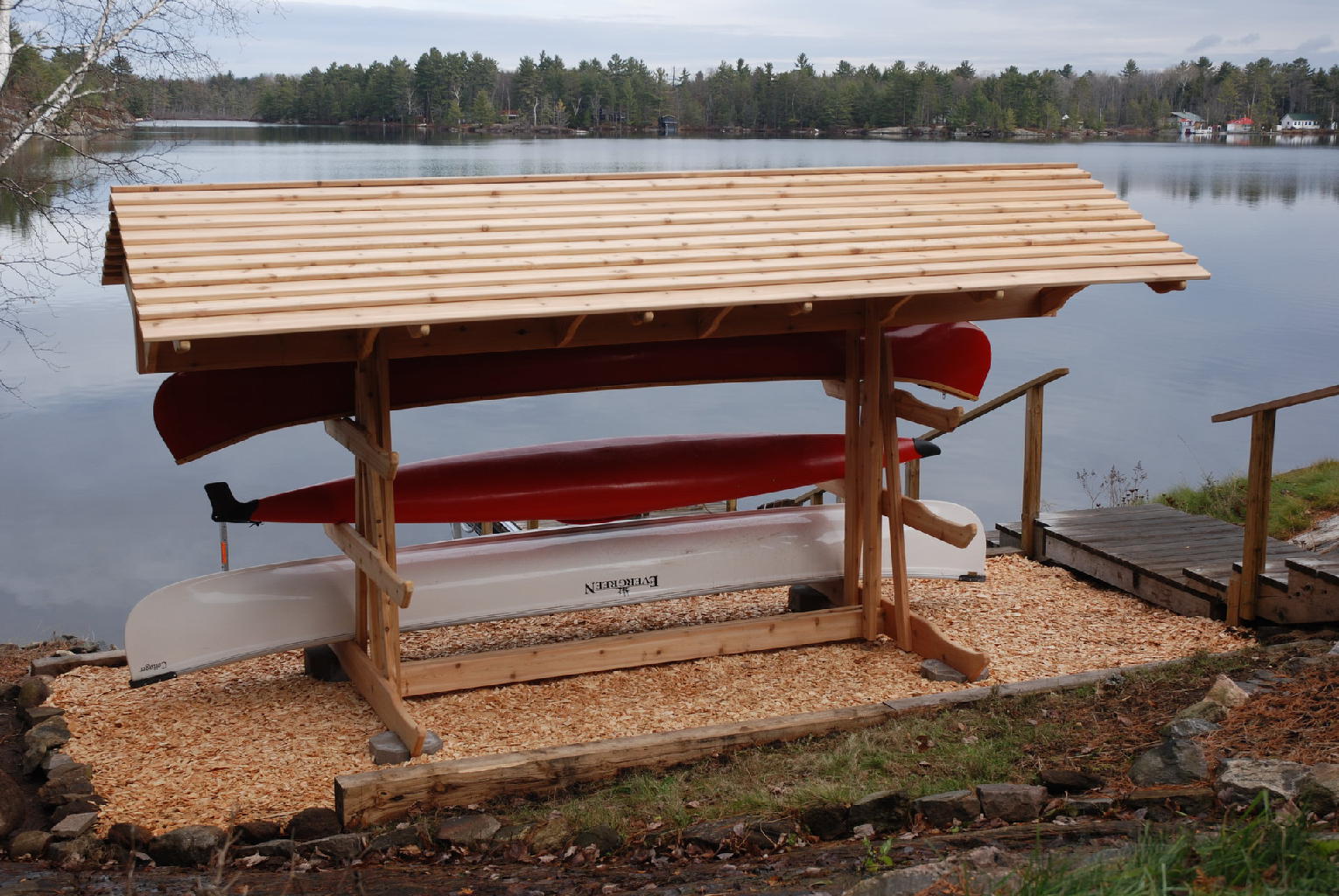

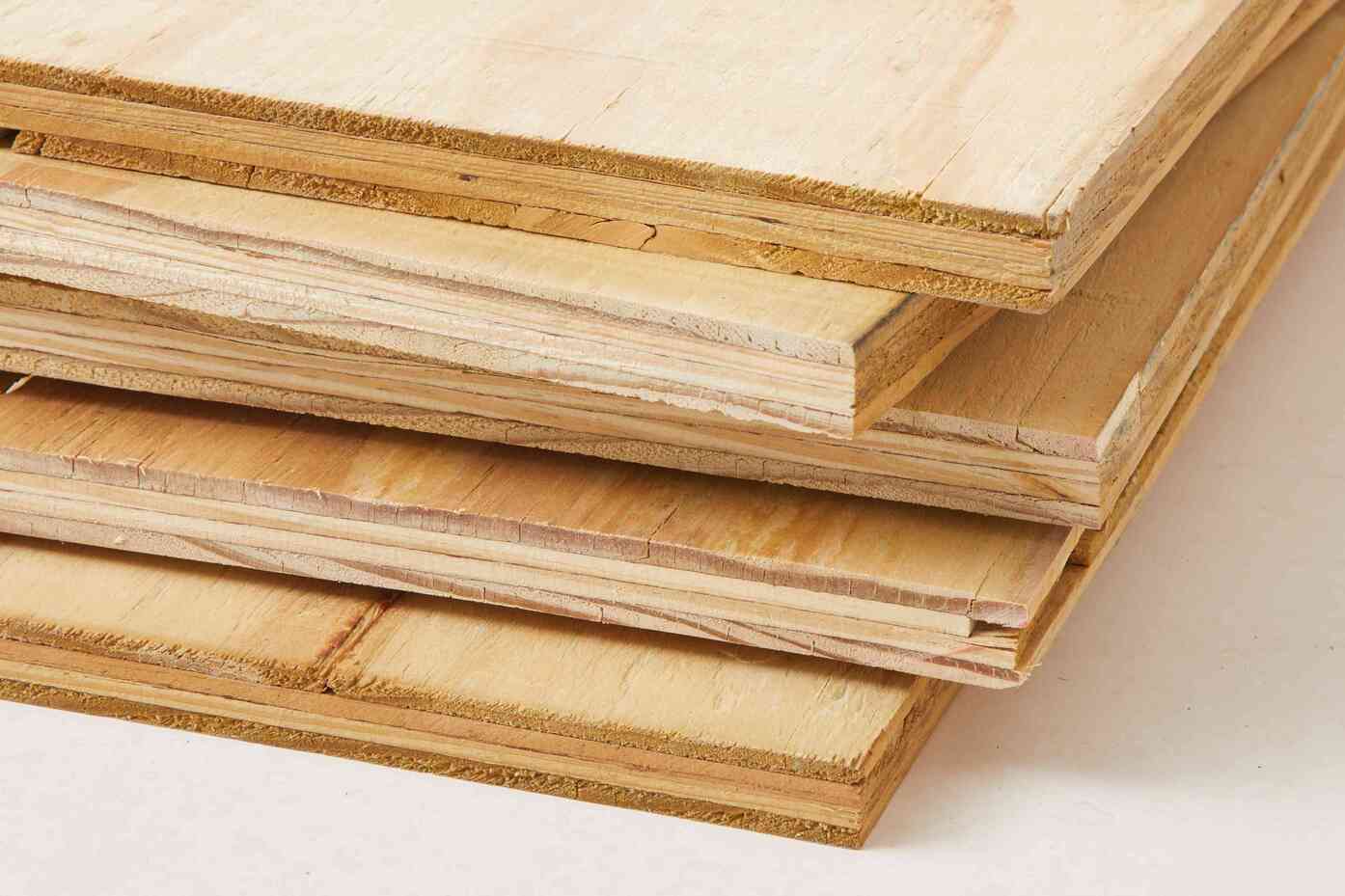

0 thoughts on “How To Store Ladders Outside”